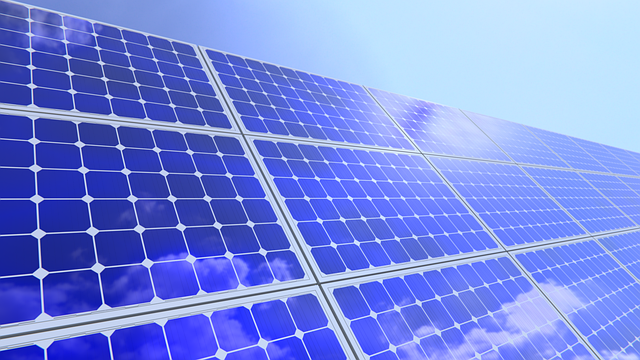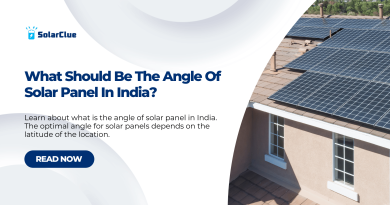Solar Rooftop Grid Integration: Powering Sustainable Living
Solar energy has emerged as a sustainable and renewable solution to the increasing global energy demand. With advancements in technology and decreasing costs, solar power has become an attractive option for residential, commercial, and industrial applications. One such application is solar rooftop on-grid solutions, which enable individuals and businesses to generate their own electricity and reduce their dependence on the grid. In this blog, we will explore the concept of solar rooftop on-grid solutions, their benefits, and their potential to revolutionize the energy sector.
Table of Contents
Brief Overview of Solar Rooftop On-Grid Solutions
Solar rooftop on-grid solutions, also known as grid-tied solar systems, involve the installation of solar panels on the rooftops of buildings, which are then connected to the local electrical grid. These systems consist of photovoltaic (PV) panels, mounting structures, inverters, and power meters. The solar panels convert sunlight into electricity, which is then used to power the building’s electrical appliances. Any excess electricity generated by the solar panels is fed back into the grid, and the building owner receives credits for the surplus energy produced.
The Benefits of Solar Rooftop On-Grid Solutions
1. Cost Savings: One of the major advantages of solar rooftop on-grid solutions is the potential for cost savings. By generating electricity from solar panels, building owners can significantly reduce their monthly electricity bills. In some cases, the savings can be substantial enough to offset the initial investment made in installing the system.
2. Environmental Sustainability: Solar power is a clean and renewable source of energy that produces zero greenhouse gas emissions. By adopting solar rooftop on-grid solutions, individuals and businesses can contribute to reducing their carbon footprint and promoting environmental sustainability.
3. Energy Independence: Solar rooftop on-grid solutions provide individuals and businesses with the opportunity to become self-sufficient in terms of electricity generation. By producing their own power, they become less reliant on the grid and can avoid any potential disruptions or price fluctuations associated with traditional energy sources.
4. Long-Term Return on Investment: Solar rooftop on-grid solutions offer a long-term return on investment. Once the initial cost of installation is recovered through energy savings, the surplus electricity generated by the system becomes a source of revenue through feed-in tariffs or net metering programs. This allows building owners to earn money from the excess energy produced.
5. Local Job Creation: The adoption of solar rooftop on-grid solutions also creates job opportunities in the solar industry. As more buildings incorporate these systems, there is an increased demand for solar panel installers, maintenance technicians, and other related professions, contributing to the growth of the green economy.
The Potential Impact of Solar Rooftop On-Grid Solutions
Solar rooftop on-grid solutions have the potential to revolutionize the energy sector in several ways.
1. Reduced Strain on the Grid: By generating electricity locally, solar rooftop on-grid systems reduce the demand for electricity from the grid during peak hours. This can alleviate strain on the grid and reduce the need for costly infrastructure upgrades.
2. Enhanced Resilience: Incorporating solar rooftop on-grid solutions can enhance the resilience of the electrical grid during emergencies or natural disasters. Buildings equipped with these systems can continue to generate power and provide essential services even when the grid is disrupted.
3. Promotion of Distributed Generation: Solar rooftop on-grid systems promote the concept of distributed generation, whereby electricity is generated at the point of consumption. This decentralization of power generation reduces transmission and distribution losses, leading to a more efficient and sustainable energy system.
4. Contribution to Clean Energy Transition: Solar rooftop on-grid solutions play a crucial role in the transition towards cleaner and renewable energy sources. By increasing the penetration of solar power, these systems contribute to reducing reliance on fossil fuels and lowering carbon emissions.
Conclusion
Experience a multitude of benefits with SolarClue’s® rooftop on-grid solutions – from substantial cost savings and environmental sustainability to achieving energy independence and ensuring a long-term return on investment. By tapping into the sun’s power, individuals and businesses can effortlessly generate their own electricity, actively contributing to a more sustainable energy future. The impact of solar rooftop on-grid solutions is far-reaching – from alleviating strain on the grid to fostering distributed generation and supporting the broader clean energy transition. With advancing technology and decreasing costs, the widespread adoption of SolarClue’s® solar rooftop on-grid solutions is not just a vision but an increasingly feasible reality, promising a brighter and cleaner energy landscape for all.
Frequently Asked Questions
Solar rooftop grid integration refers to the seamless connection of solar panels to the electrical grid, enabling clean energy production and consumption.
Solar panels on the rooftop generate electricity, and the integrated grid allows for efficient energy exchange, reducing reliance on conventional power sources.
Benefits include cost savings, reduced carbon footprint, and potential incentives through net metering for excess energy contributions.
In most cases, yes. Consult with professionals to assess roof suitability and ensure compliance with local regulations.
Typically, on-grid systems prioritize immediate energy consumption. Consider storage solutions for backup power during outages.
Yes, these scalable solutions are adaptable for commercial use, offering businesses sustainable energy options and potential cost savings.
Net metering credits users for surplus energy sent back to the grid, offsetting energy consumption costs.
Installation times vary but typically range from a few days to a couple of weeks, depending on system size and complexity.
Regular inspections and cleaning are recommended for optimal performance. Grid-connected systems generally have lower maintenance needs.
Check with local authorities and utility providers for potential incentives, rebates, or tax credits available for adopting solar rooftop grid solutions.




